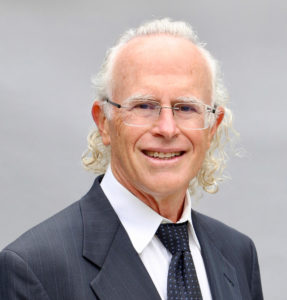AHCA: A bright year ahead
Mark Parkinson arrived ready to address the elephants in the room: the Trump Administration, the GOP-controlled Congress and the repeal and replace effort for the Affordable Care Act, which proposed drastic cuts to Medicaid.
“I’ve been involved in politics for almost 40 years, and I never thought I would see a year like this,” Parkinson said at the start of the 68th annual American Health Care Association/National Center for Assisted Living (AHCA/NCAL) Conference and Expo in Las Vegas. “This is an incredibly difficult time to operate, this may be the hardest time to operate, but there is light at the end of the tunnel. We will make it through this, and may of you will not only survive, you will prosper.”
Parkinson, president and CEO of AHCA, acknowledged the fight with the proposed Medicaid changes that would have put most skilled nursing and many assisted living members out of business. But his jokes about Twitter and his own aging brought much-needed comic relief, and he had a positive outlook on the upcoming year.
Here are four reasons why Parkinson says the industry should be optimistic:
1. Growing numbers
Parkinson described how the organization has grown. AHCA now represents more than 13,500 buildings across the country. In the last election cycle, the organization spent $13 million in political activities, up from $2 million a year. AHCA hosted more than 200 political events. And, in the repeal and replace debate alone, received 130,000 letters and emails.
“We used to talk about how we wanted a seat at the table,” he says. “We got it. We used to talk about how we wanted the politicians to recognize us and talk about our issues. They are.”
2. Market shift
The silver tsunami is real, but the senior living industry is well poised to ride the wave. Of the 16 quality measures on Nursing Home Compare, the industry is making material improvements in 14 areas.
“If we were getting worse, if we weren’t taking care of folks, and I was thinking about the future, I would be pessimistic,” Parkinson says. “The opposite is happening. You have never been better.”
3. Tipping point
The age of the population is finally starting to help the senior living industry. Between the year 2010 and 2015, there’s been no increase in people between the ages of 80 and 85. The reason: The Great Depression. Birth rates dropped dramatically, and it is having an impact on census today.
“If you’re having a problem with census in your building, and your administrator is hassling you, or your CEO or your board is on you over this issue, you need to tell them it’s not your fault,” Parkinson says to a chuckling audience. “It was caused by the Great Depression.”
Birth rates started going back up in 1935, and industry will start to feel it soon. In 2015, 5.7 million people were age 80 or older. In 2020, that number will grow to 6.4 million. In 2025, when the youngest baby boomers turn 80, the numbers will be off the charts. A significant change to senior living demographics is fast approaching.
4. Survival mode
“The final reason I’m optimistic is that I know you don’t let anything get in your way,” Parkinson says. “We figure out a way to survive.”
Parkinson cited as an example the recent hurricanes in Texas, Florida and Puerto Rico. He says the industry has been quietly preparing for such natural disasters for years. Practicing with staff and residents and coordinating with state and local officials ensured scores of buildings were safely evacuated and thousands were sheltered in place. All of which was possible because of personal sacrifices staff made to take care of residents.
“I know it’s not going to be easy and I’m not going to say that it will be,” Parkinson says. “But we’ll make it through.
“We’re stronger than we’ve ever been in D.C. You never done a better job in your buildings than you’re doing right now. The older people are coming our way, and we don’t let anything get in our way.”

Nicole was Senior Editor at I Advance Senior Care and Long Term Living Magazine 2015-2017. She has a Journalism degree from Kent State University and is finalizing a master’s degree in Information Architecture and Management. She has extensive studies in the digital user experience and in branding online media. She has worked as an editor and writer for various B2B publications, including Business Finance.
Related Articles
Topics: Advocacy , Articles , Leadership











